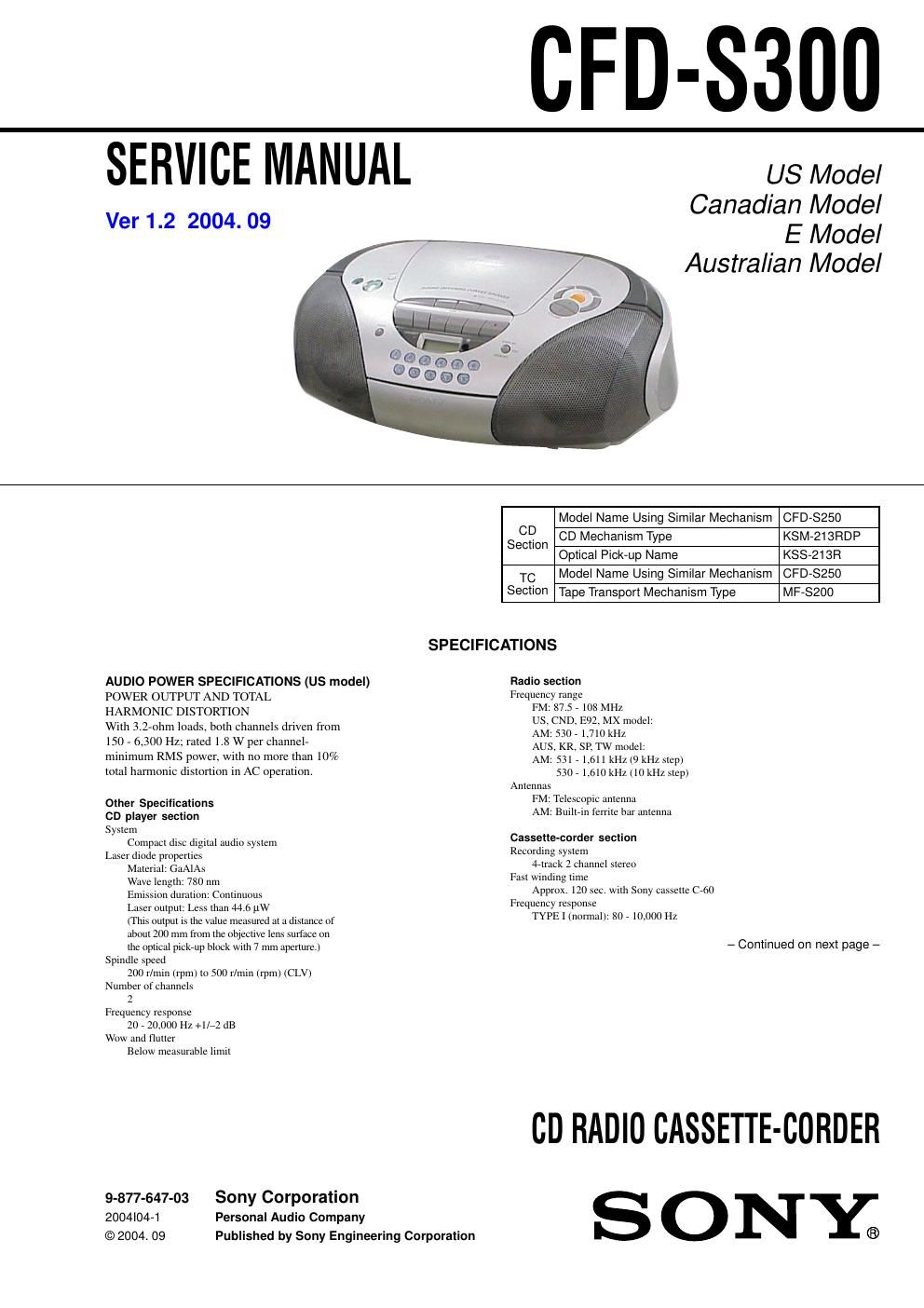Sony cfd s 300 service manual
This is the 56 pages manual for sony cfd s 300 service manual.
Read or download the pdf for free. If you want to contribute, please upload pdfs to audioservicemanuals.wetransfer.com.
Page: 1 / 56
